Research on FBG Tactile Sensing Shape Recognition Based on Convolutional Neural Network
Abstract
1. Introduction
2. The Principle of FBG Sensing and Shape Recognition Algorithm
2.1. Sensing Characteristics of FBG
2.2. Strain Transfer Rate of FBG
2.3. Introduction to the Principle of Algorithm
2.4. The Recognition Model Based on CNN
- Data collection, using FBG sensor to collect data of each shape;
- Data preprocessing;
- Divide the data into training sets and test sets, build a 1D-CNN model, and substitute the sample set data into the model for training;
- Evaluate the model.
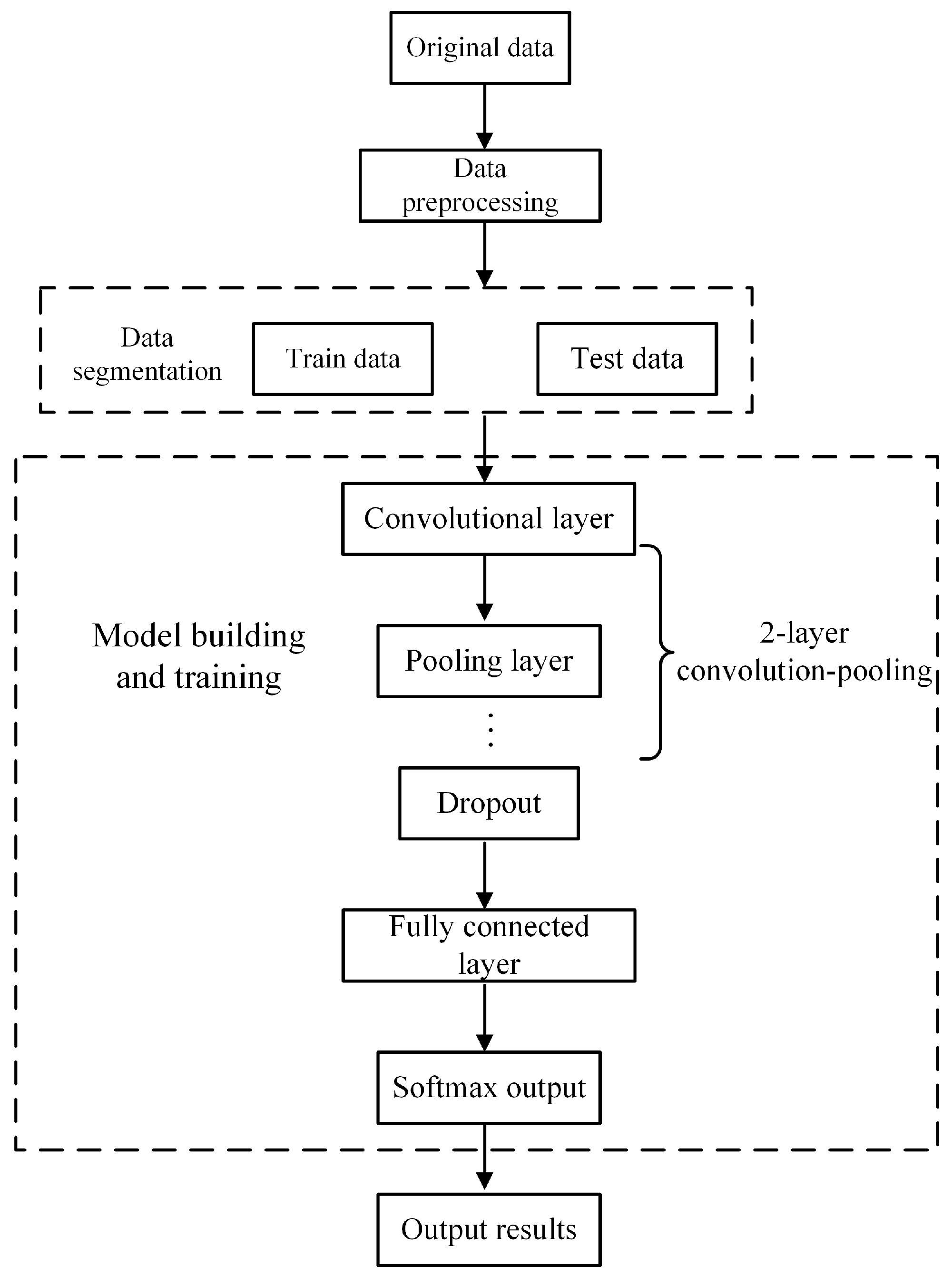
3. Simulation Analysis and Structural Design of FBG Sensor
Analysis of Depth, Grating Spacing, and Optical Fiber Spacing of FBG
4. Sensitivity Experiment of FBG Tactile Sensing Array
4.1. Production of FBG Tactile Sensing Array
4.2. Sensitivity Calibration Experiment of FBG Tactile Sensing Array
4.3. Linearity
5. Shape Recognition Based on FBG and CNN
5.1. Data Collection and Algorithm Parameters
5.2. Results and Analysis
5.3. The Number of Shapes and the Influence of Applied Contact Force on Recognition
5.3.1. The Influence of the Number of Shapes on Recognition
- As the number of shapes increases, the accuracy of CNN gradually decreases, indicating that the number of shapes has a certain impact on the recognition accuracy. The higher the number, the lower the accuracy.
- The accuracy decline trend is divided into two stages. When the number of shapes is greater than 10, the accuracy curve declines faster and the recognition accuracy of 15 shapes is above 80%, which can meet the requirements of engineering applications.
- At the same time, when there are 18 types of shapes, the accuracy is lower than 75%. The reason is that the more shapes, the higher the similarity, which has an impact on the final accuracy rate. In general, CNN has a high recognition rate for different shape types, and can distinguish trilateral, quadrilateral, circle, and polygon, which meets the application scenarios of FBG sensing array.
5.3.2. The Influence of Contact Force on Recognition
5.4. The Influence of Random Error on the Accuracy of the Algorithm
6. Conclusions
- The FBG sensing array made of 3D printing and flexible resin has the advantages of simple structure and wiring, convenient production, good anti-interference, etc. The shape recognition can overcome the defects of visual recognition by using the tactile form. When the adhesive length of FBG is 20 mm or above, the strain transfer rate of FBG can be well guaranteed; when the hole diameter of FBG is 0.2 mm, the strain transfer rate is higher.
- The FBG tactile shape sensing array is sensitive to external load perception, and the overall change is relatively uniform. The average fitting advantage of FBG is above 99.8%, the average sensitivity of FBG with a grid length of 10 mm is 15.105 pm/N, and the average sensitivity of FBG with a grid length of 5 mm is 10.24 pm/N. The relative error of the sensitivity of loading and unloading a single FBG does not exceed 2%. The linearity of FBG is good, and its value is within 0.04.
- CNN, RF, SVM, and KNN are used to classify and identify 2D shapes. CNN is better than the remaining three algorithms. Its accuracy is 6.11%, 9.44%, and 12.01% higher than RF, KNN, and SVM, and its F1 score is 6.3%, 8.73%, and 11.94% higher than RF, KNN, and SVM. The accuracy of CNN for the square, circle, rectangle, triangle, pentagon, hexagon, heptagon, octagon, etc. reaches 96.58%.
- The number of shapes and the contact force will affect the recognition result. The higher the number of shapes, the lower the accuracy. For the same shape, the greater the contact force applied, the better the recognition result.
- There is a negative correlation between the proportion of random error and algorithm accuracy. With the increase in the proportion of random error, the accuracy of the algorithm will gradually decrease. CNN has good recognition accuracy and noise resistance. After adding random error, the accuracy of CNN can still maintain a high level, and the relative error of its accuracy is less than 4%.
Author Contributions
Funding
Institutional Review Board Statement
Informed Consent Statement
Data Availability Statement
Conflicts of Interest
References
- Liu, L.; Zou, Y.; Chen, B. Review on Research Progress of 2D Shape Description and Classification. Comput. Eng. Appl. 2021, 57, 39–41. [Google Scholar]
- Liu, M. An Apple Recognition Method and Experiment Based on the Fusion of Color and Shape. Master’s Thesis, Shandong University of Technology, Zibo, China, 2023. [Google Scholar]
- Sekertekin, Y.; Bozyel, I.; Gokcen, D. A Flexible and Low-Cost Tactile Sensor Produced by Screen Printing of Carbon Black/PVA Composite on Cellulose Paper. Sensors 2020, 20, 2908. [Google Scholar] [CrossRef]
- Arakeri, J.; Hasse, B.; Fuglevand, J. Object Discrimination Using Electrotactile Feedback. J. Neural Eng. 2018, 15, 046007. [Google Scholar] [CrossRef]
- Fu, H. Research on Optical Tactile Sensors. Master’s Thesis, Beijing University of Posts and Telecommunications, Beijing, China, 2021. [Google Scholar]
- Yang, Y.; Kong, L.; Cai, W.; Zhao, D.; Chen, Y.; Song, Z. Research Progress of Fiber Optic Shape Sensor. Semicond. Optoelectron. 2022, 43, 642. [Google Scholar]
- Jiang, X. Research on Edge and Angle Recognition Technology Based on Fiber Grating Tactile Sensing. Master’s Thesis, Hefei University of Technology, Hefei, China, 2021. [Google Scholar]
- Qian, M.; Zhang, J.; Wei, X. Research on Material Recognition Function of Fiber Bragg grating Flexible Tactile Sensor. Chin. J. Sci. Instrum. 2022, 43, 206–212. [Google Scholar]
- Wang, J. Research on Tactile Sensor Based on FBG. Master’s Thesis, Shandong University, Jinan, China, 2018. [Google Scholar]
- Wang, Y.; Zhu, G.; Li, C.; Wei, S.; Yang, L. Identification of characteristics of slip signal based on fiber Bragg grating flexible sensor. Infrared Laser Eng. 2023, 52, 311–321. [Google Scholar]
- Schneebeli, N.; Maques, C.; Leal, A., Jr. 2D Shape Reconstruction with Fiber Bragg Gratings Embedded in Rubbers Using Machine Learning Methods. Opt. Fiber Technol. 2024, 82, 103618. [Google Scholar] [CrossRef]
- Sunder, M.S.S.; Tikkiwal, V.A.; Kumar, A.; Tyagi, B. Unveiling the Transparency of Prediction Models for Spatial PM2.5 over Singapore: Comparison of Different Machine Learning Approaches with eXplainable Artificial Intelligence. AI 2023, 4, 787–811. [Google Scholar] [CrossRef]
- Sun, L.; Sun, X.; Liang, T.; Li, C.; Zhang, C. Study on Strain Transfer Mechanism of Three Dimensions Printing Encapsulated Fiber Bragg Grating Sensor. Acta Photonica Sin. 2021, 50, 0906002. [Google Scholar]
- Shen, S.; Wei, H.; Wang, J.; Liu, H.; Ma, Z.; Chen, N.; Pamg, F. 3D Printing Optical Fiber Fabry-Perot Cavity Acoustic Emission Sensor. Chin. J. Lasers 2020, 47, 0906004. [Google Scholar] [CrossRef]
- Morais, E.; Pontes, M.J.; Marques, C.; Leal, A., Jr. Liquid Level Sensor with Two FBGs Embedded in a PDMS Diaphragm: Analysis of the Linearity and Sensitivity. Sensors 2022, 22, 1268. [Google Scholar] [CrossRef]
- Yi, D.; Liu, F.; Geng, Y.; Li, X.; Hong, X. High-Sensitivity and Large-Range Fiber Optic Temperature Sensor Based on PDMS-Coated Mach-Zehnder Interferometer Combined with FBG. Opt. Express 2021, 29, 18624–18633. [Google Scholar] [CrossRef]
- Cheng, X. Research on Polymethyl Methacrylate Fiber Grating Biomedical Sensors. Ph.D. Thesis, Jinan University, Guangzhou, China, 2019. [Google Scholar]
- Guerreiro, H.; Flottmann, F.A.; Kyselyova, A.A.; Wagner, M.; Brekenfeld, C.; Eckert, B.; Illies, T.; Wodarg, F.; Fiehler, J.; Bester, M. First Experience with Walrus Balloon Guide Catheter in a Whole-Body Flow Model. Neuroradiology 2023, 65, 1787–1792. [Google Scholar] [CrossRef]
- Battistini, G.; Paolini, G.; Masotti, D.; Costanzo, A. 3D-arc3-D Etching Techniques for Low-Cost Wearable Microwave Devices in Grounded Coplanar Waveguide. In Proceedings of the Advanced Functional 2022 IEEE MTT-S International Microwave Biomedical Conference (IMBioC), Suzhou, China, 16–18 May 2022; pp. 63–65. [Google Scholar]
- Rao, H.; Luo, B.; Wu, D.; Yi, P.; Chen, F.; Shi, S.; Zou, X.; Chen, Y.; Zhao, M. Study on the Design and Performance of a Glove Based on the FBG Array for Hand Posture Sensing. Sensors 2023, 65, 8495. [Google Scholar] [CrossRef]
- Liu, Y.; Xie, J.; Liu, S.; Zhao, Y.; Zhu, Y.; Qi, G. Research on the Methodology of Development and Calibration of Flexible Encapsulated Fiber Bragg Grating Sensors. Measurement 2022, 201, 111730. [Google Scholar] [CrossRef]
- Hegde, G.; Prasad, M.V.N.; Asokan, S. Temperature Compensated Diaphragm Based Fiber Bragg Grating (FBG) Sensor for High Pressure Measurement for Space Applications. Microelectron. Eng. 2021, 248, 111615. [Google Scholar] [CrossRef]
- Ghorbel, M.; Ammar, S.; Kessentini, Y.; Jmaiel, M. Masking for Better Discovery: Weakly Supervised Complementary Body Regions Mining for Person Re-Identification. Expert Syst. Appl. 2022, 197, 116636. [Google Scholar] [CrossRef]
- Samit, C.; Marguerite, M.; Lisa, C. Automatic Defect Detection for Fabric Printing Using a Deep Convolutional Neural Network. Int. J. Fash. Des. Technol. Educ. 2022, 15, 142–157. [Google Scholar]
- Thakur, R.; Maheshwari, P.; Datta, S.K.; Dubey, S.K. Smartphone-Based, Automated Detection of Urine Albumin Using Deep Learning Approach. Measurement 2022, 194, 110948. [Google Scholar] [CrossRef]
- Yang, J.; Hou, P.; Yang, C.; Yang, N. Study of a Long-Gauge FBG Strain Sensor with Enhanced Sensitivity and Its Application in Structural Monitoring. Sensors 2021, 21, 3492. [Google Scholar] [CrossRef]
- Wang, D.; Wu, Y.; Song, Y.; Wang, Y.; Zhu, L. A Double-Mass Block Acceleration Sensor Based on FBG. Opt. Fiber Technol. 2021, 66, 102681. [Google Scholar] [CrossRef]
- Albeladi, A.; Muqaibel, H. Evaluating Compressive Sensing Algorithms in Through-the-Wall Radar via F1-Score. Int. J. Signal Imaging Syst. Eng. 2018, 11, 164–171. [Google Scholar] [CrossRef]

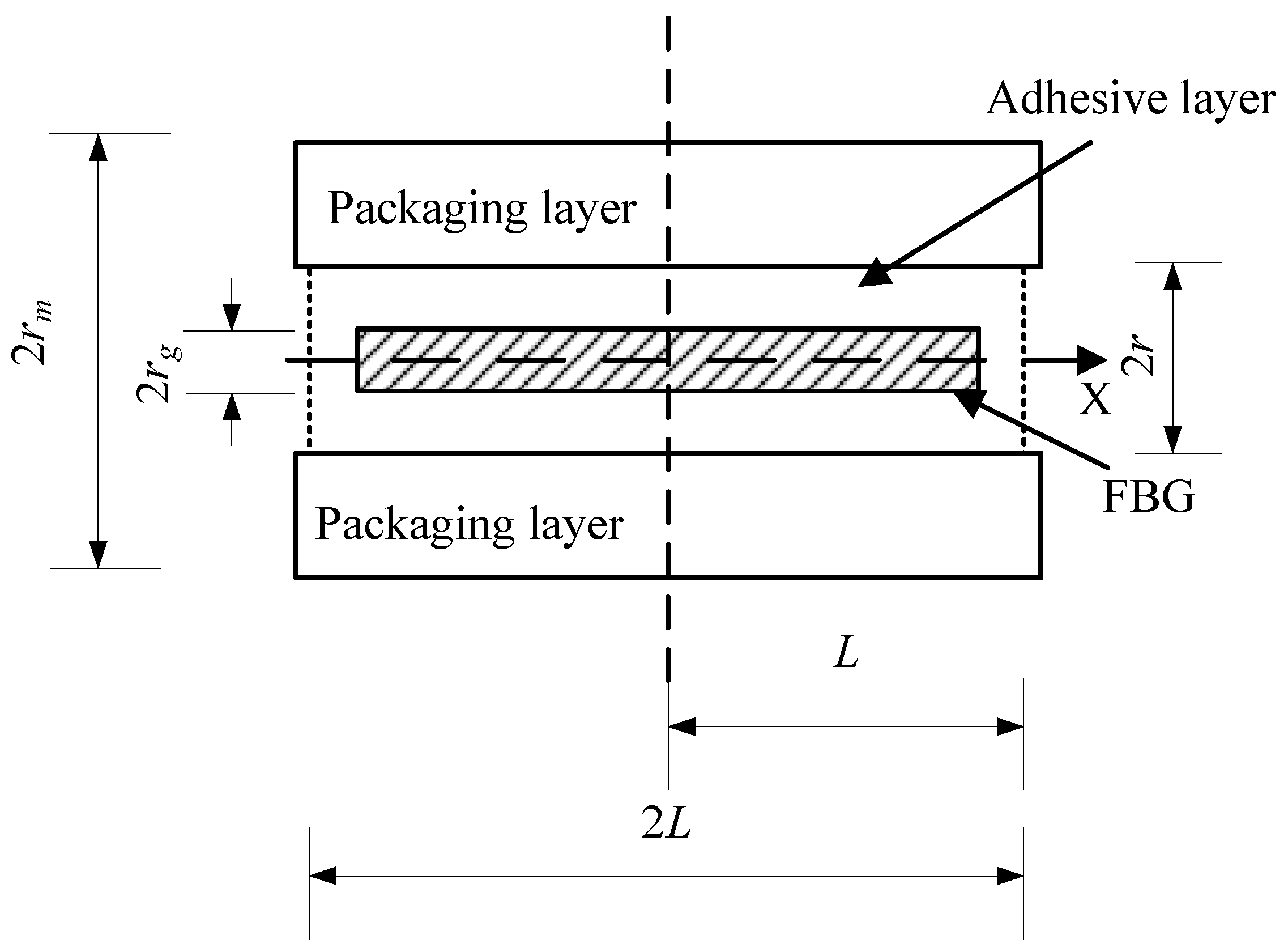
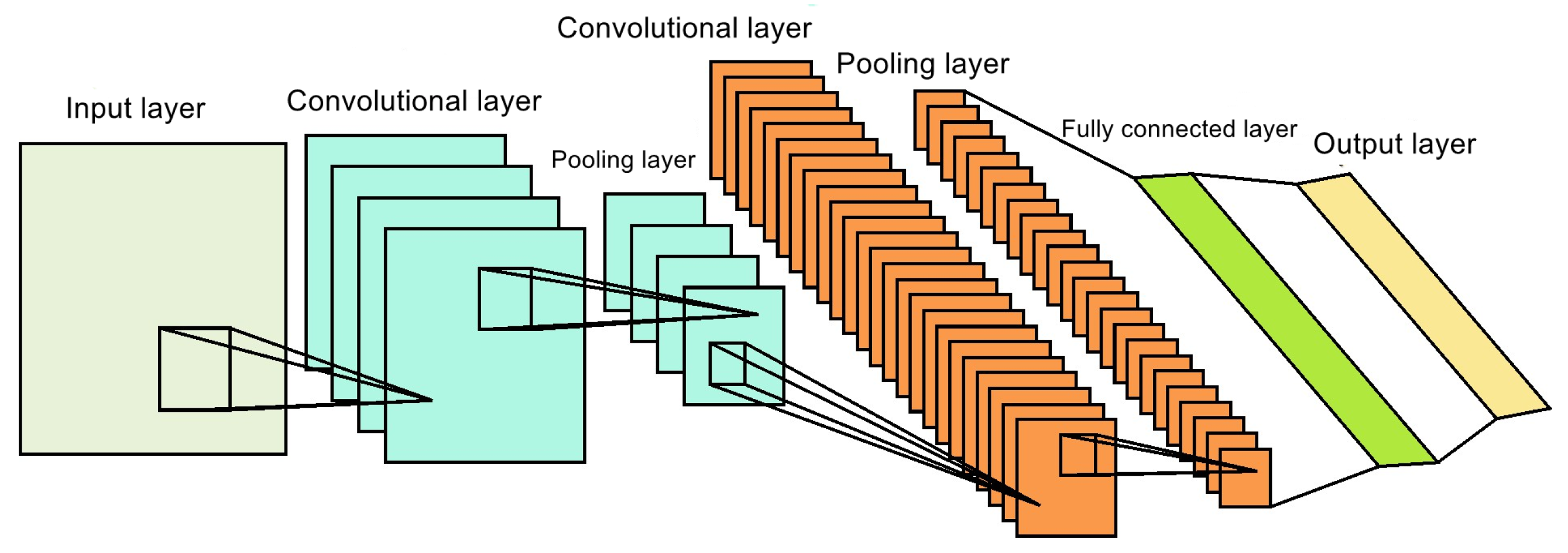
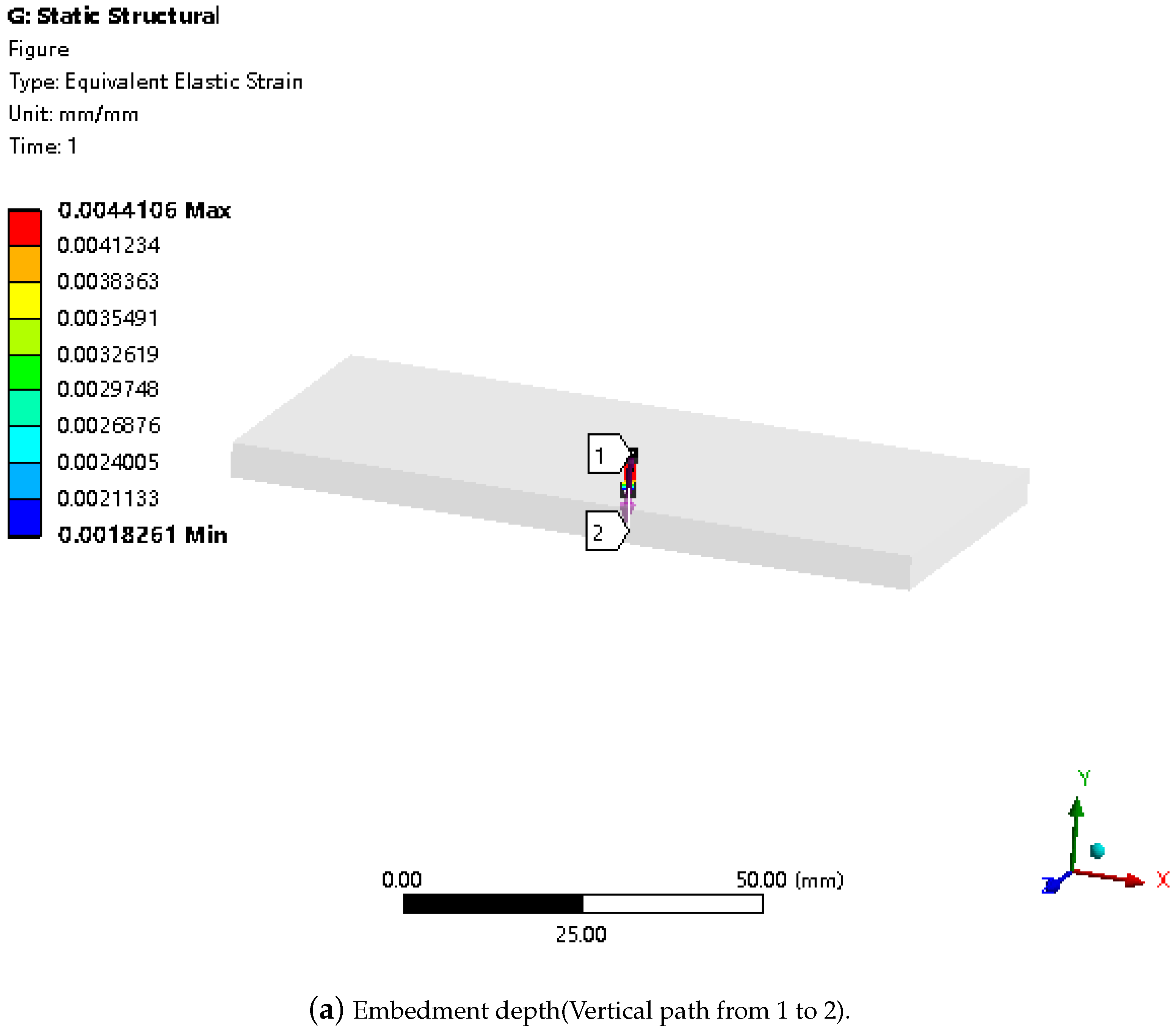

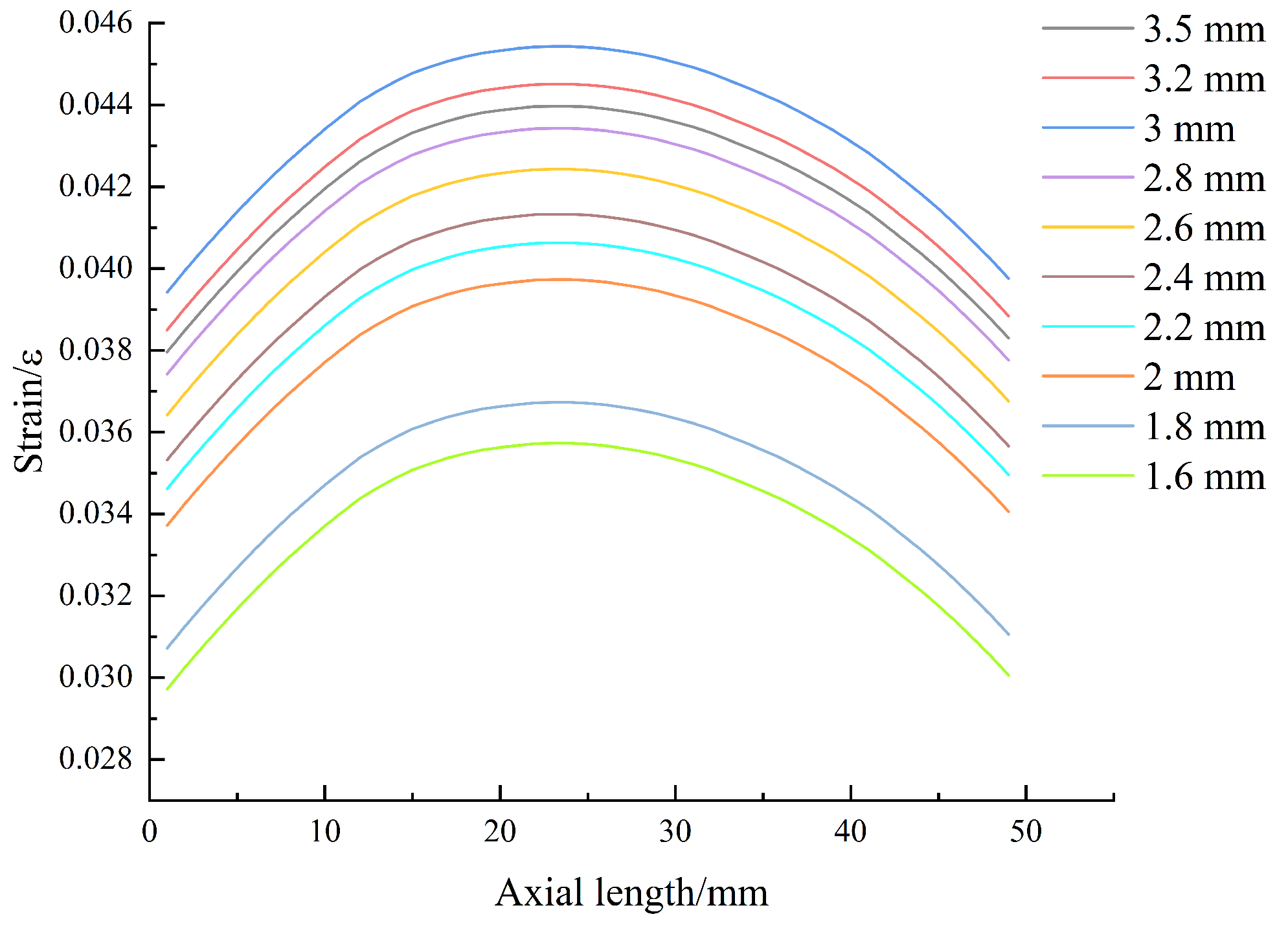
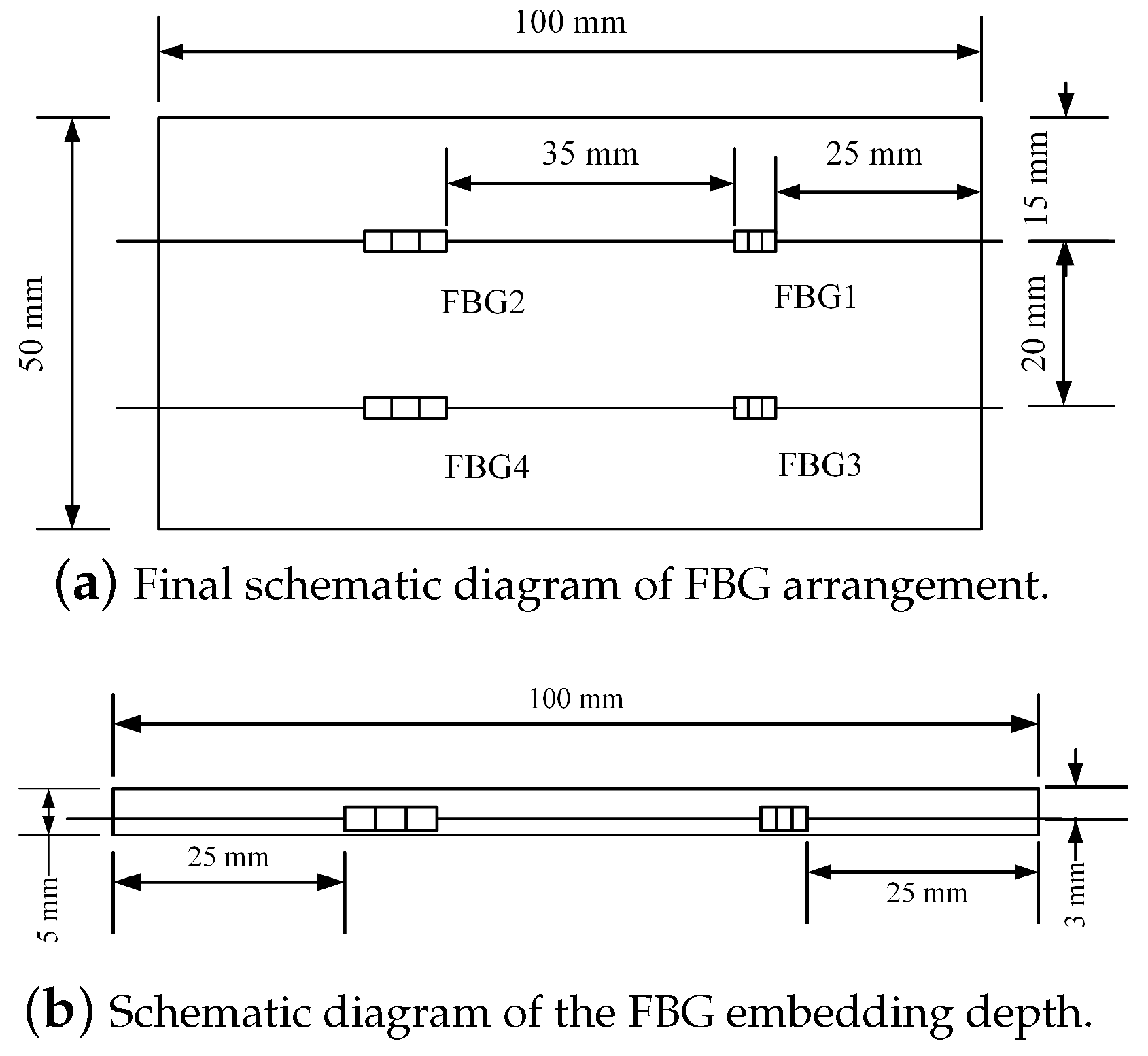


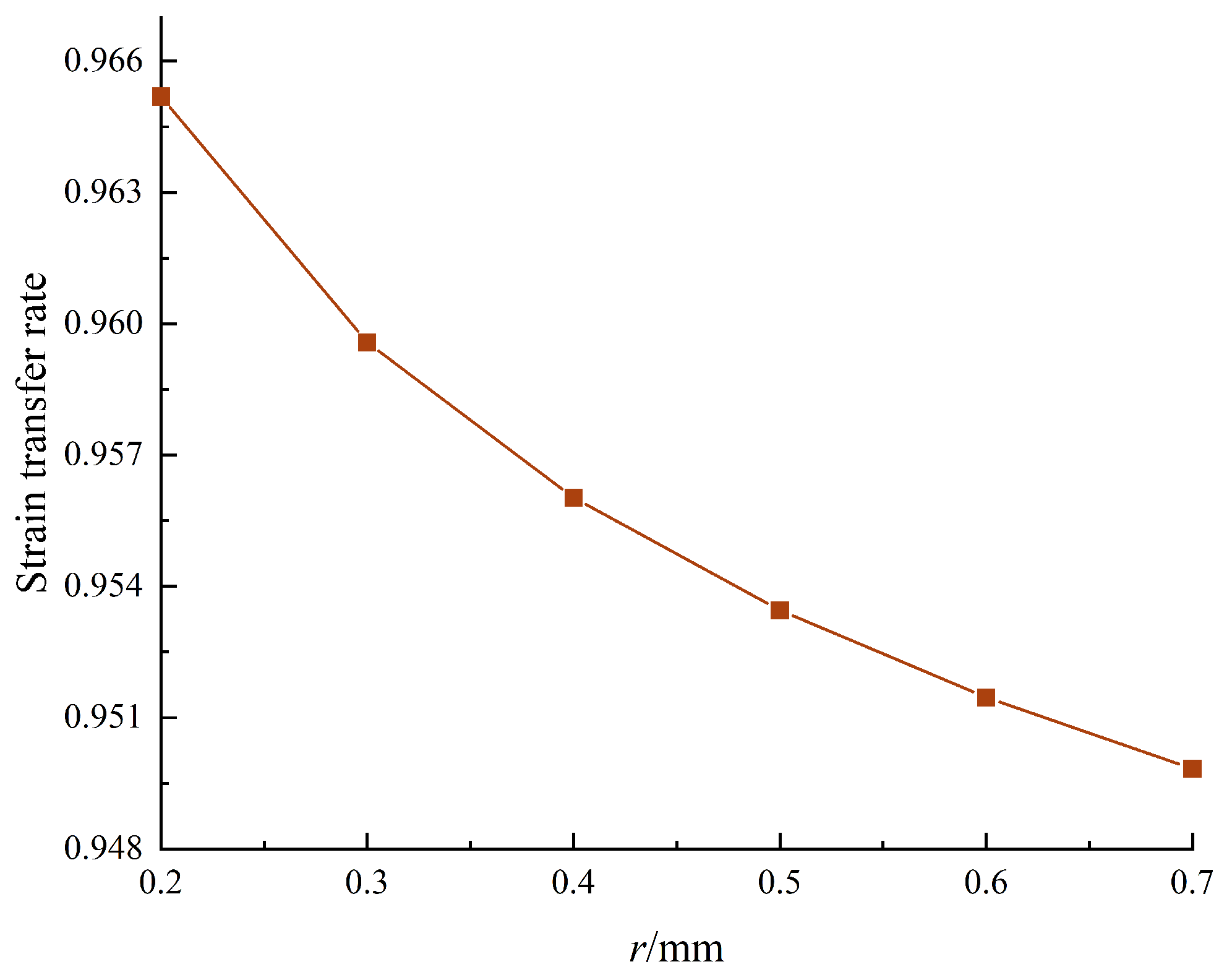
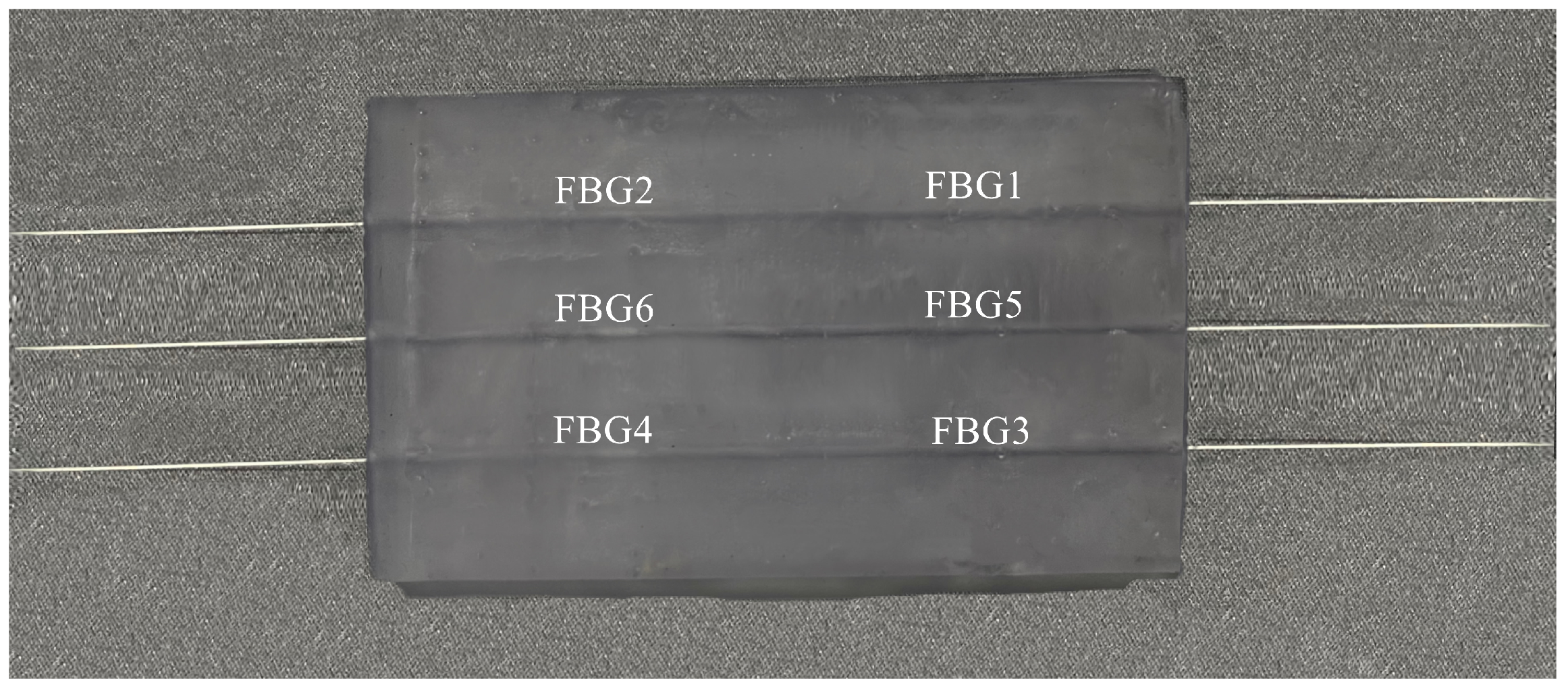
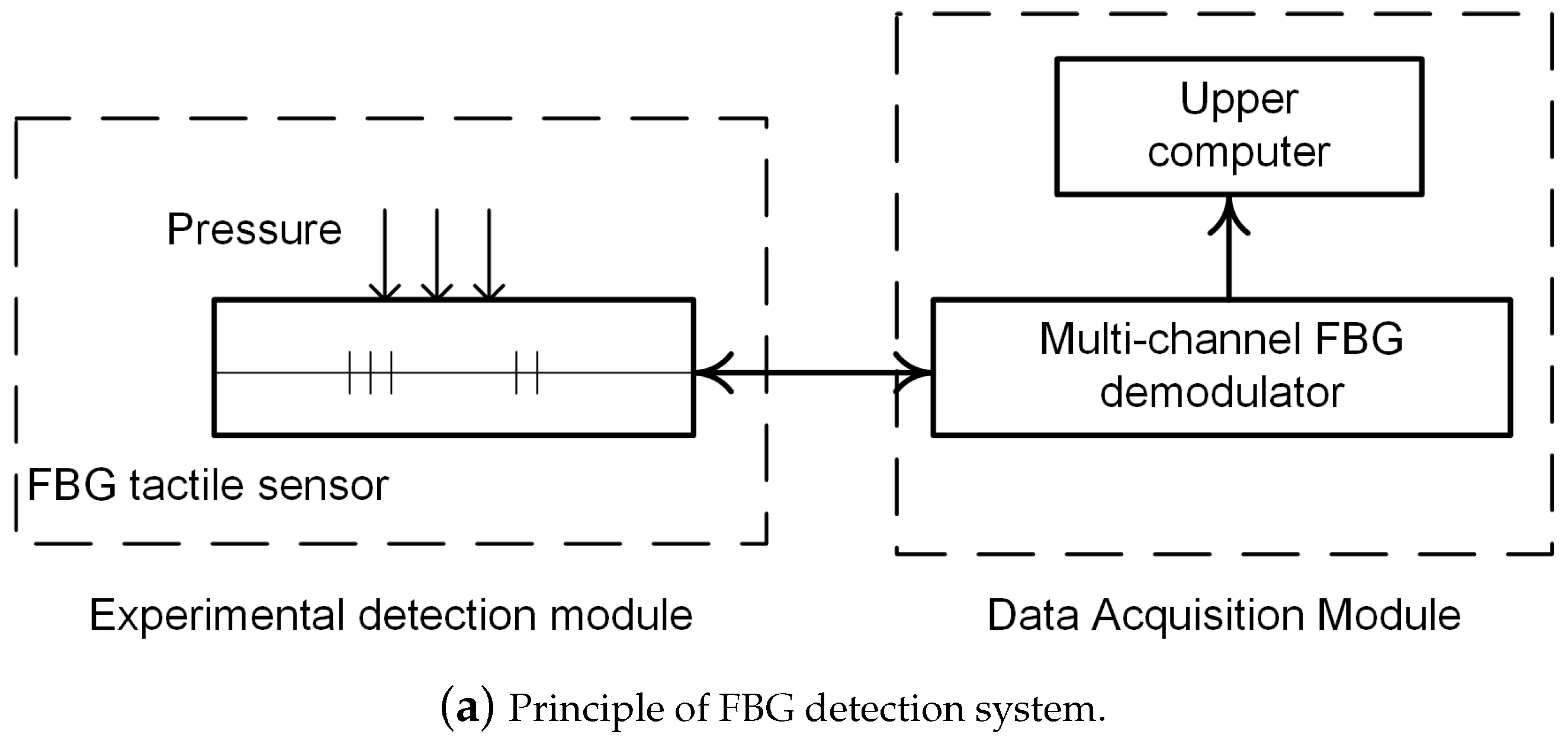
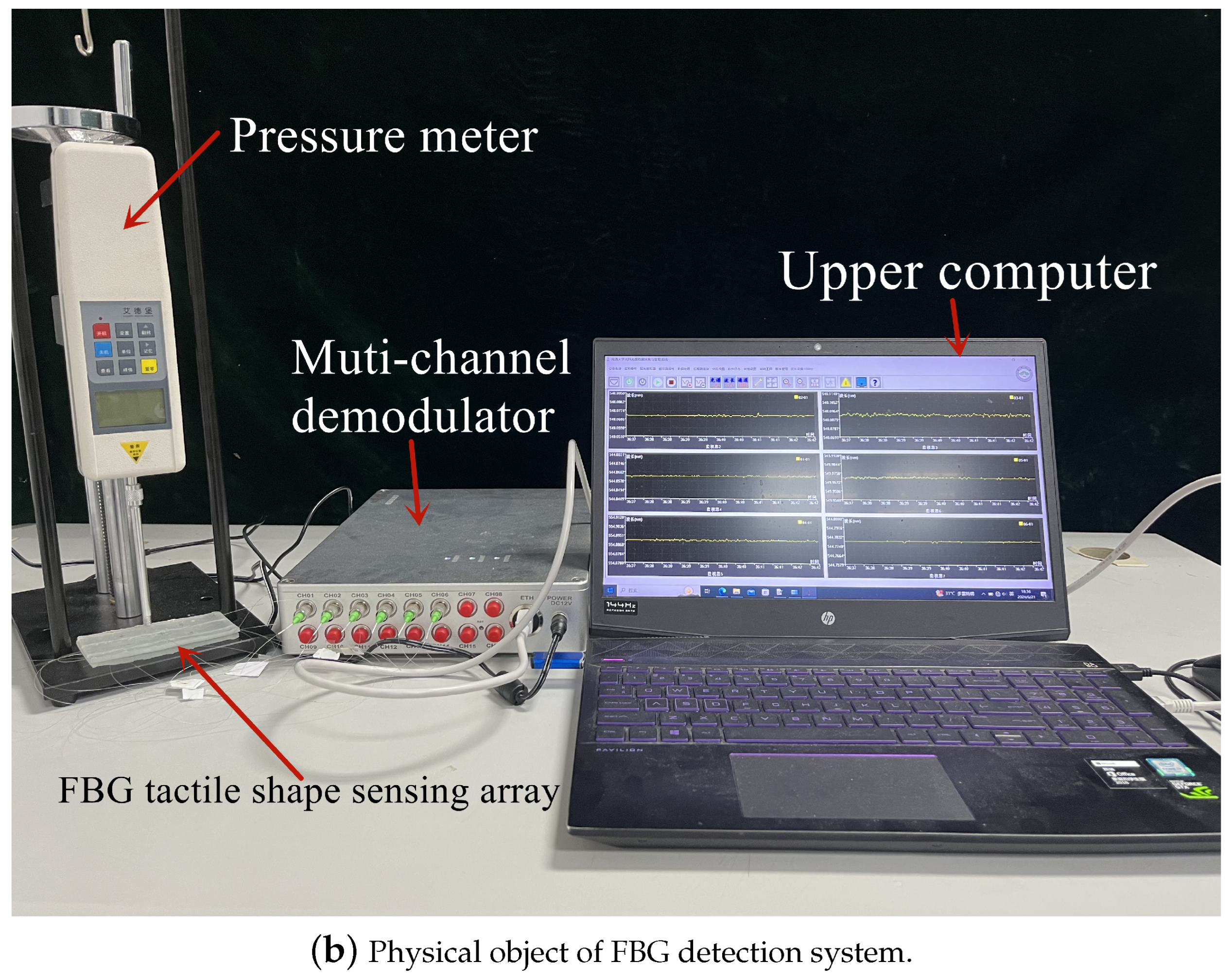
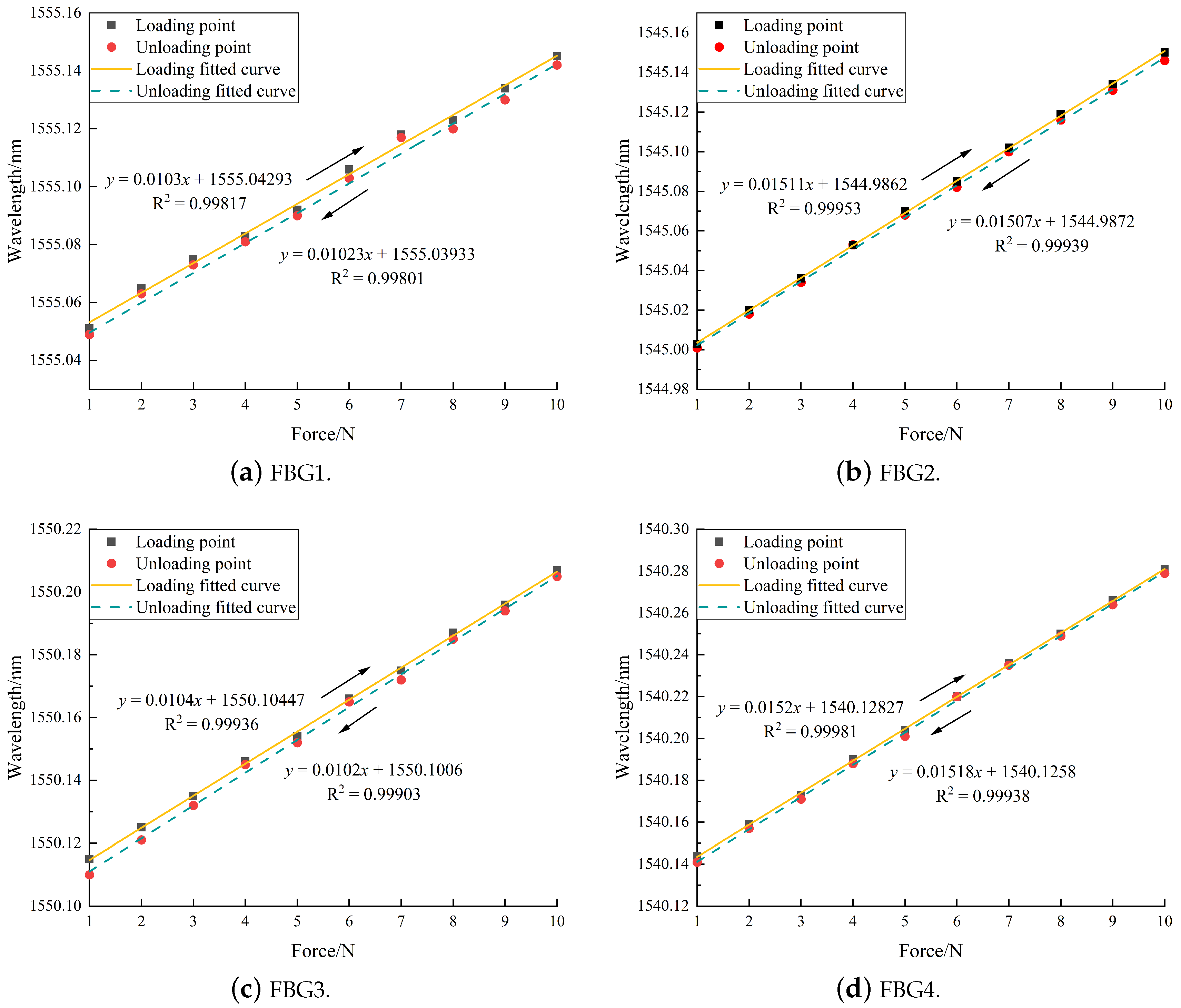
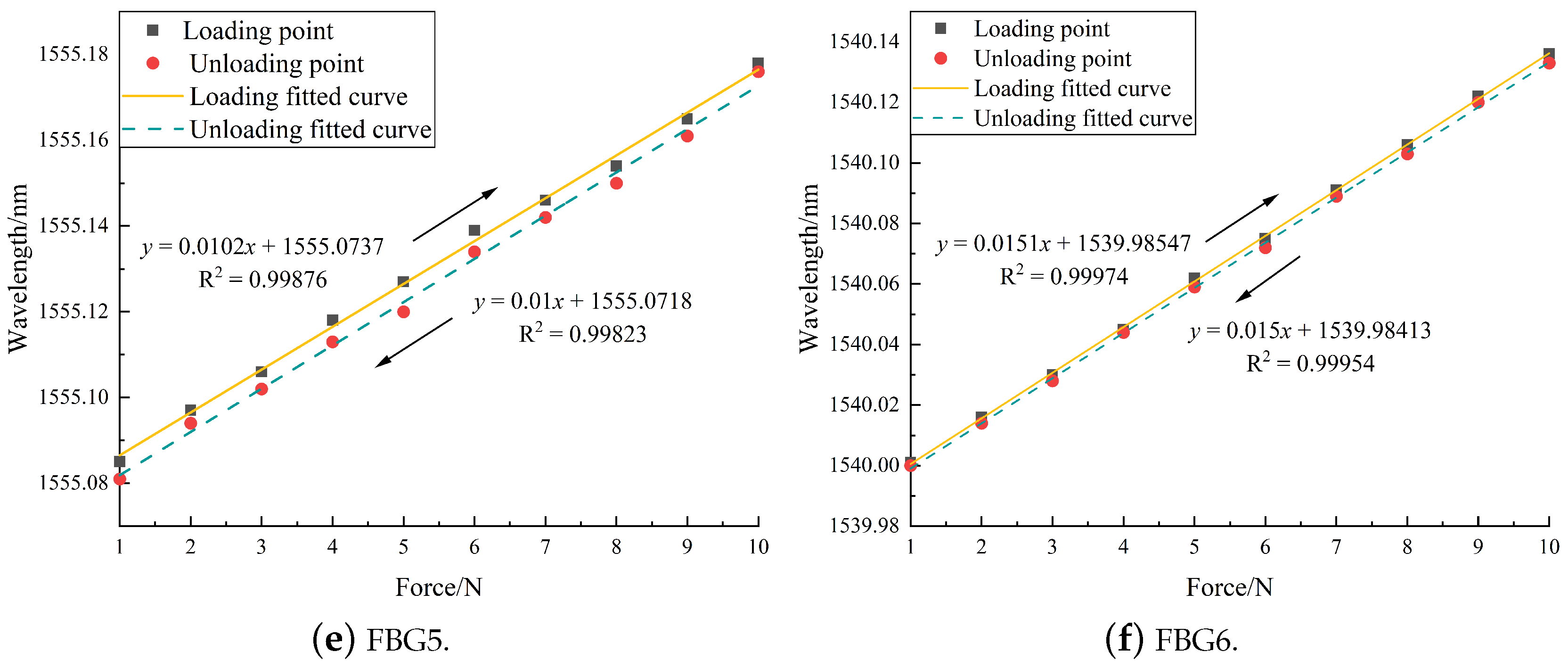
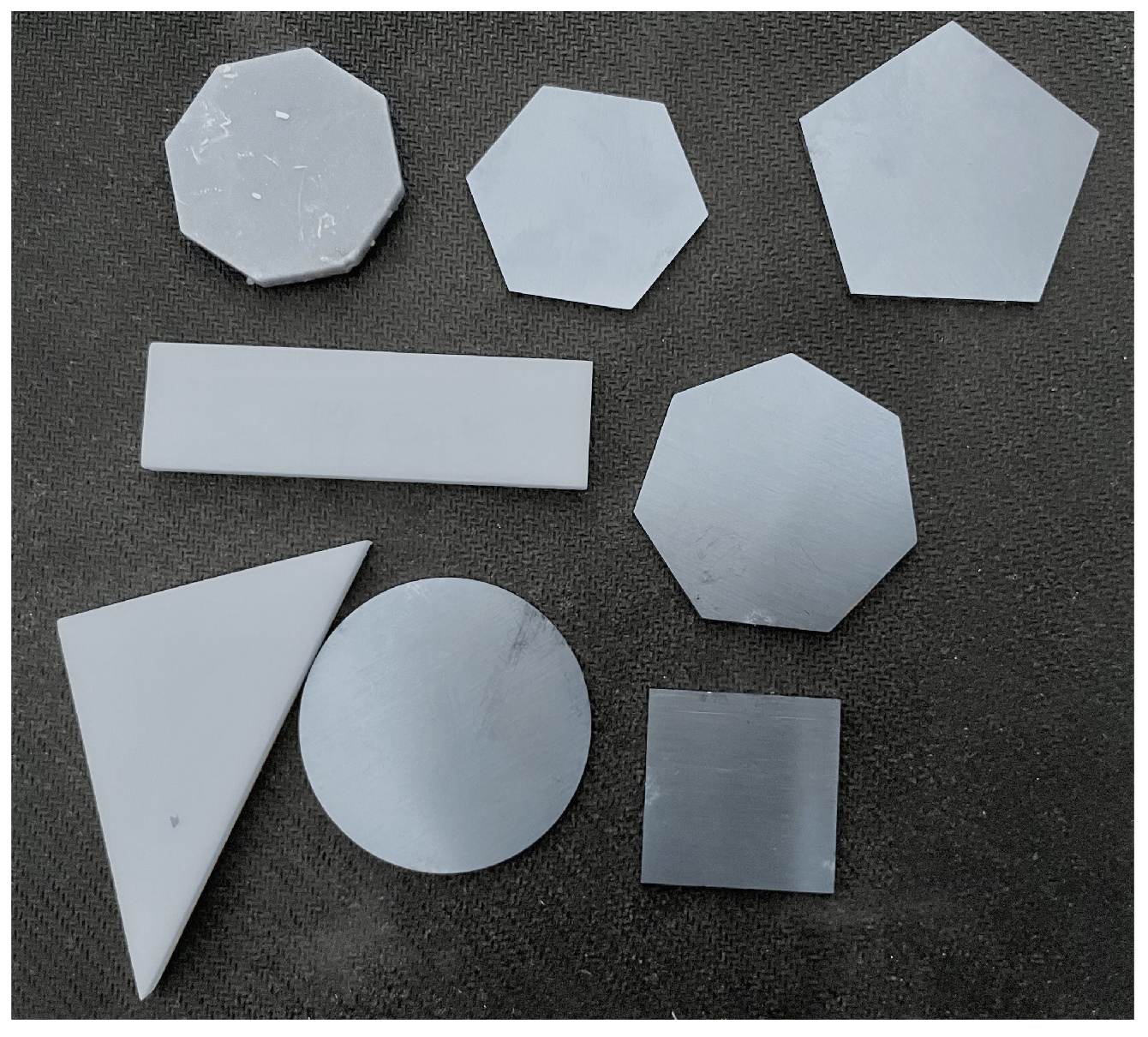




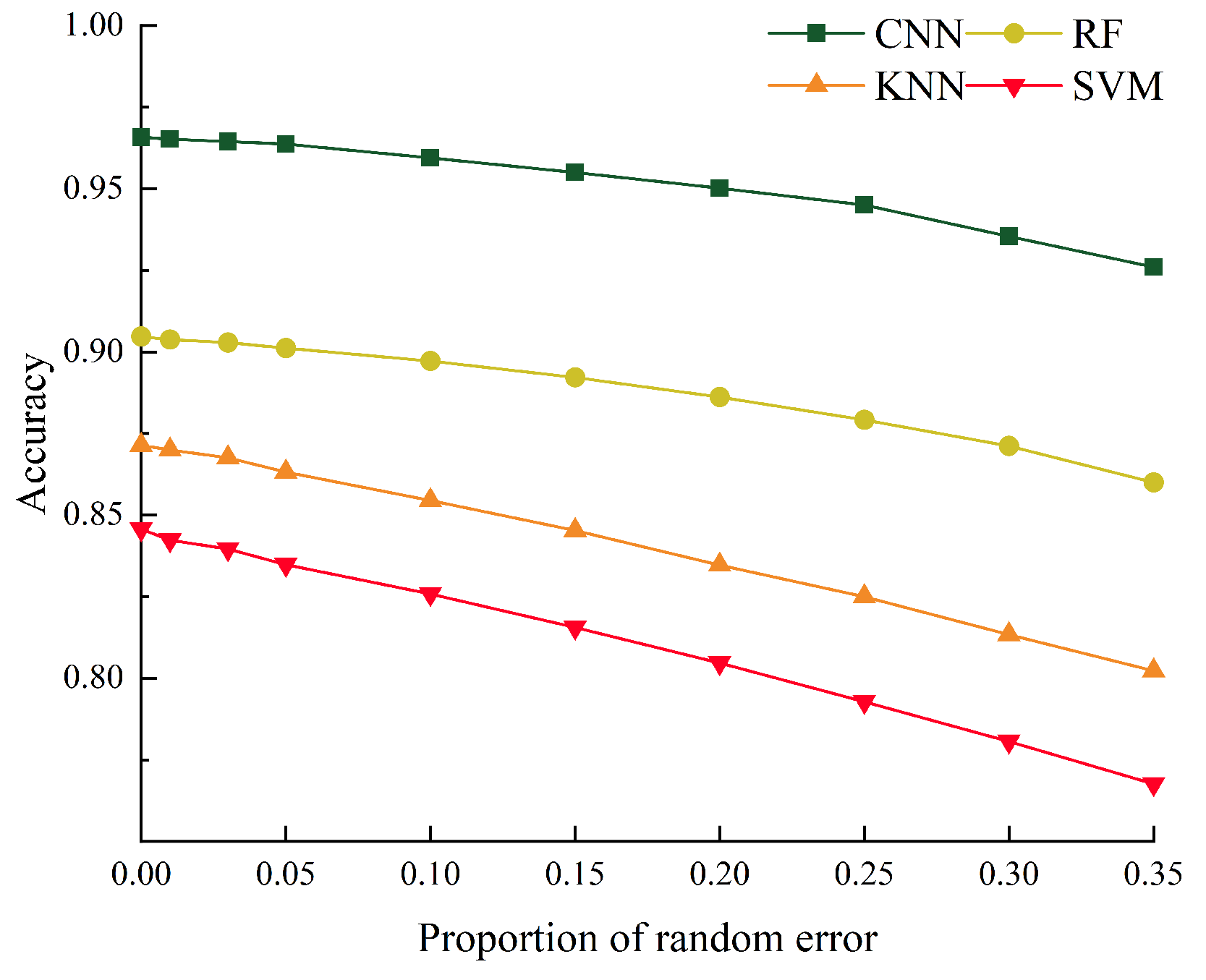
| Parameters | Maximum Strain Range/mm |
|---|---|
| Depth of embedding of FBG | [1.498, 3.502] |
| Optimal spacing of fiber | [14.989, 35.003] |
| Optimal spacing of grating | [31.25, 66.667] |
| Name of FBG | Wavelength/nm | Grating Length/mm | Wavelength Deviation/nm | Reflectivity | Side-Mode Suppression Ratio/dB |
|---|---|---|---|---|---|
| FBG1 | 1555.028 | 5 | ±0.5 | >0.7 | ≥15 |
| FBG2 | 1544.972 | 10 | ±0.5 | >0.9 | ≥15 |
| FBG3 | 1550.098 | 5 | ±0.5 | >0.7 | ≥15 |
| FBG4 | 1540.112 | 10 | ±0.5 | >0.9 | ≥15 |
| FBG5 | 1555.035 | 5 | ±0.5 | >0.7 | ≥15 |
| FBG6 | 1540.004 | 10 | ±0.5 | >0.9 | ≥15 |
| Name of FBG | Linearity |
|---|---|
| FBG1 | 0.04 |
| FBG2 | 0.008 |
| FBG3 | 0.014 |
| FBG4 | 0.008 |
| FBG5 | 0.028 |
| FBG6 | 0.009 |
| Shape | Area/cm2 | Mass/g | Material |
|---|---|---|---|
| triangle | 15 | 3.2 | resin |
| circle | 16 | 3.9 | resin |
| square | 9 | 1.7 | resin |
| rectangle | 14 | 2.9 | resin |
| pentagon | 15.48 | 3.2 | resin |
| hexagon | 10.392 | 1.7 | resin |
| heptagon | 14.536 | 2.9 | resin |
| octagon | 13.91 | 2.7 | resin |
| Layer Connection | Input | Operation | Convolution Kernel | Output |
|---|---|---|---|---|
| 0–1 | 3000 × 1 | convolution 1 | 25 × 1 × 8 | 3000 × 8 |
| 1–2 | 3000 × 8 | max pooling 1 | 15 × 1 | 200 × 8 |
| 2–3 | 200 × 8 | convolution 2 | 25 × 1 × 16 | 200 × 16 |
| 3–4 | 200 × 16 | max pooling 2 | 15 × 1 | 13 × 16 |
| 4–5 | 13 × 16 | fully connection | 208 | 208 |
| 5–6 | 208 | fully connection | 128 | 128 |
| 6–7 | 128 | fully connection (softmax) | 8 | 8 |
Disclaimer/Publisher’s Note: The statements, opinions and data contained in all publications are solely those of the individual author(s) and contributor(s) and not of MDPI and/or the editor(s). MDPI and/or the editor(s) disclaim responsibility for any injury to people or property resulting from any ideas, methods, instructions or products referred to in the content. |
© 2024 by the authors. Licensee MDPI, Basel, Switzerland. This article is an open access article distributed under the terms and conditions of the Creative Commons Attribution (CC BY) license (https://creativecommons.org/licenses/by/4.0/).
Share and Cite
Lu, G.; Shen, Z.; Cai, T.; Xu, Y. Research on FBG Tactile Sensing Shape Recognition Based on Convolutional Neural Network. Sensors 2024, 24, 4087. https://doi.org/10.3390/s24134087
Lu G, Shen Z, Cai T, Xu Y. Research on FBG Tactile Sensing Shape Recognition Based on Convolutional Neural Network. Sensors. 2024; 24(13):4087. https://doi.org/10.3390/s24134087
Chicago/Turabian StyleLu, Guan, Zhihui Shen, Ting Cai, and Yiming Xu. 2024. "Research on FBG Tactile Sensing Shape Recognition Based on Convolutional Neural Network" Sensors 24, no. 13: 4087. https://doi.org/10.3390/s24134087
APA StyleLu, G., Shen, Z., Cai, T., & Xu, Y. (2024). Research on FBG Tactile Sensing Shape Recognition Based on Convolutional Neural Network. Sensors, 24(13), 4087. https://doi.org/10.3390/s24134087






